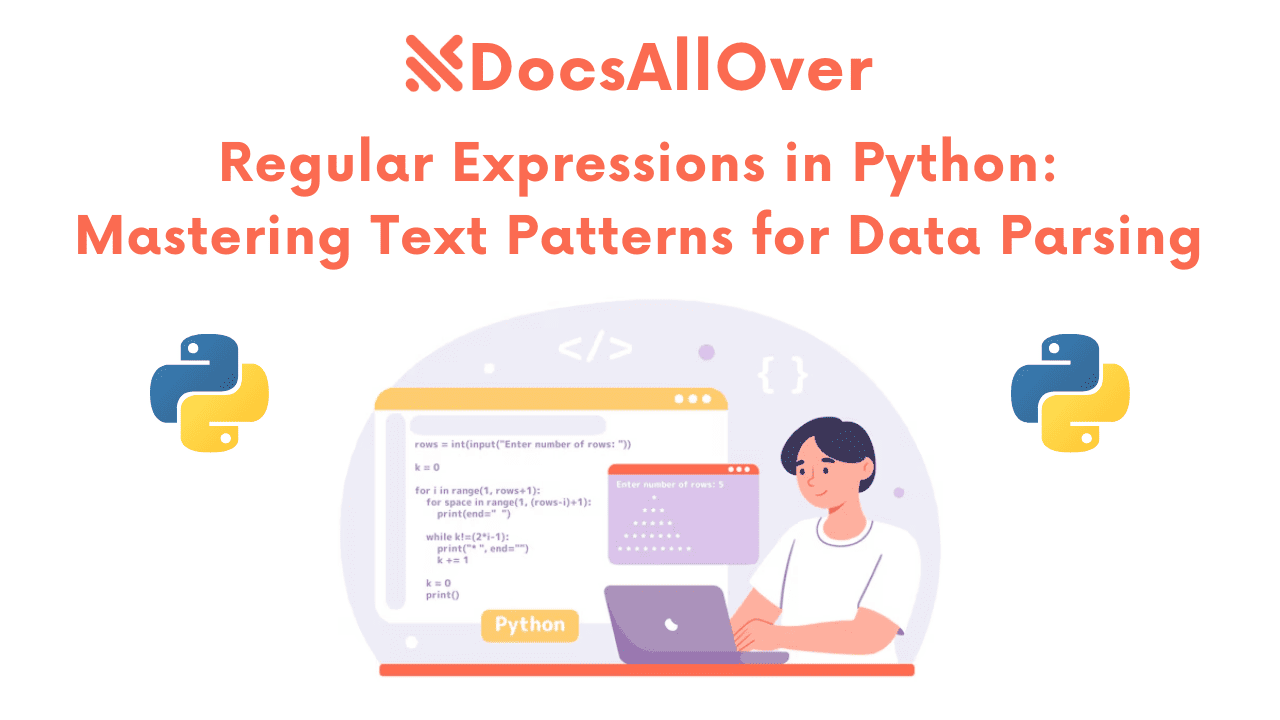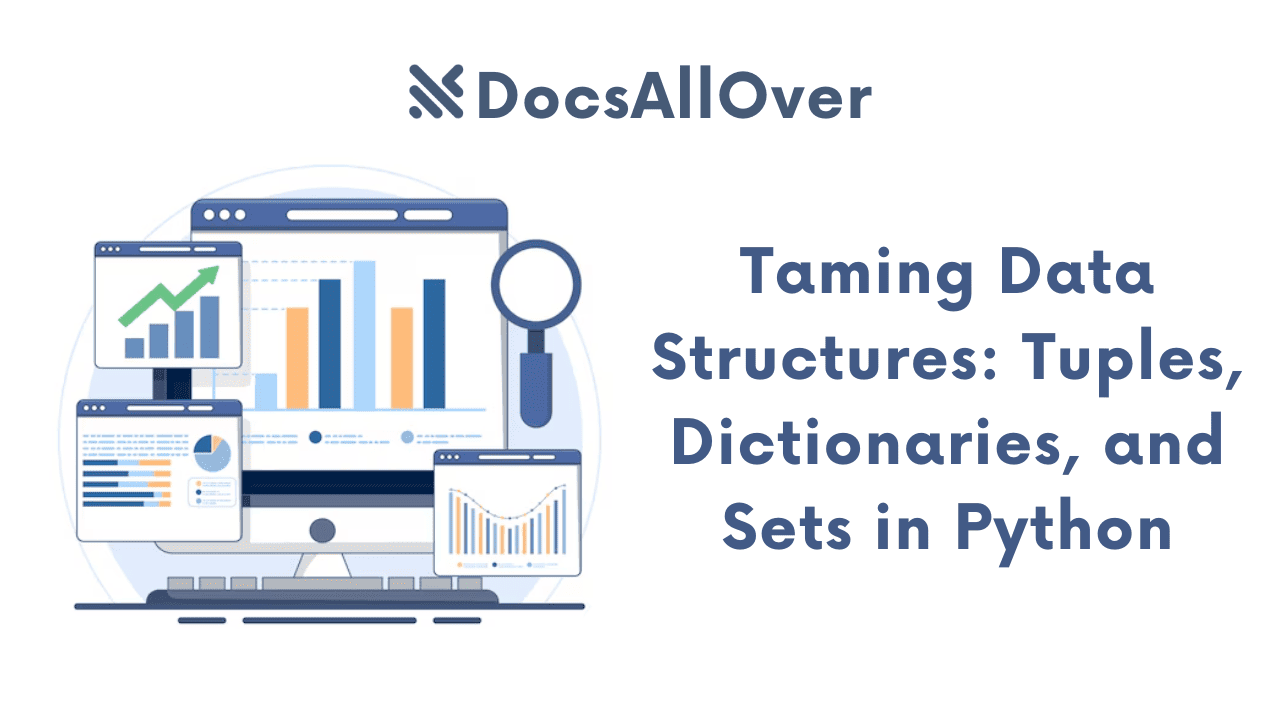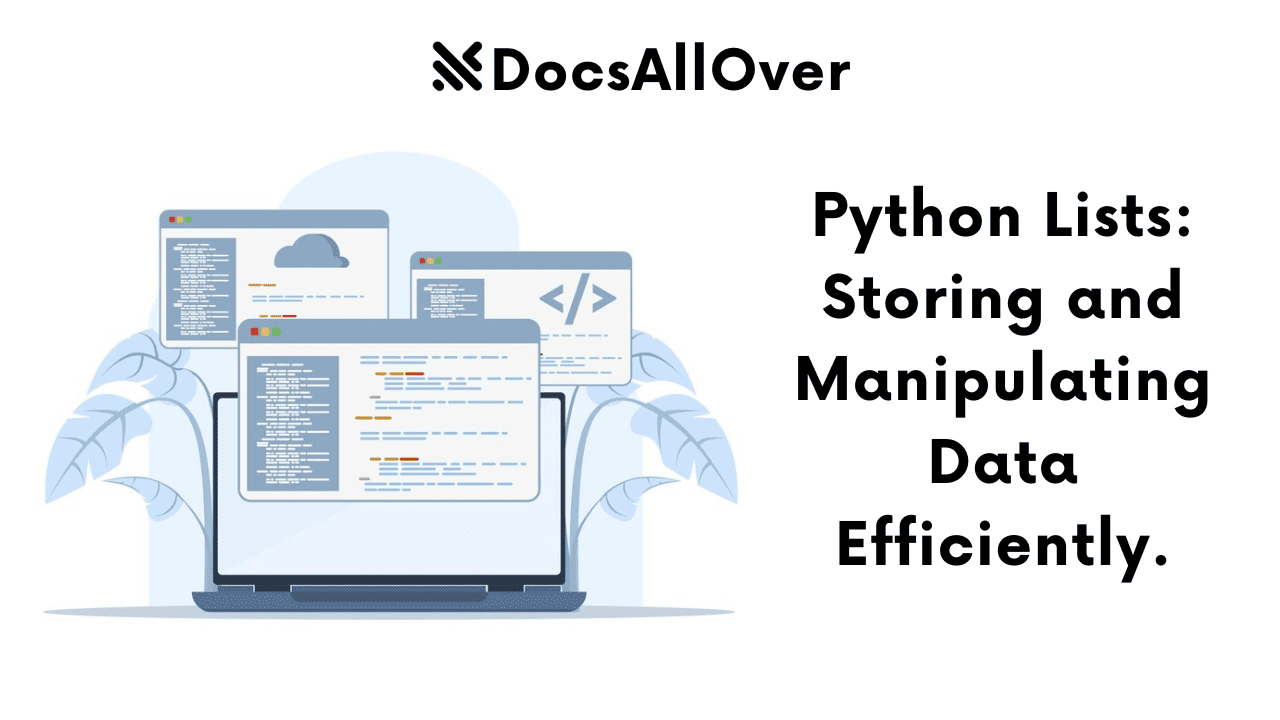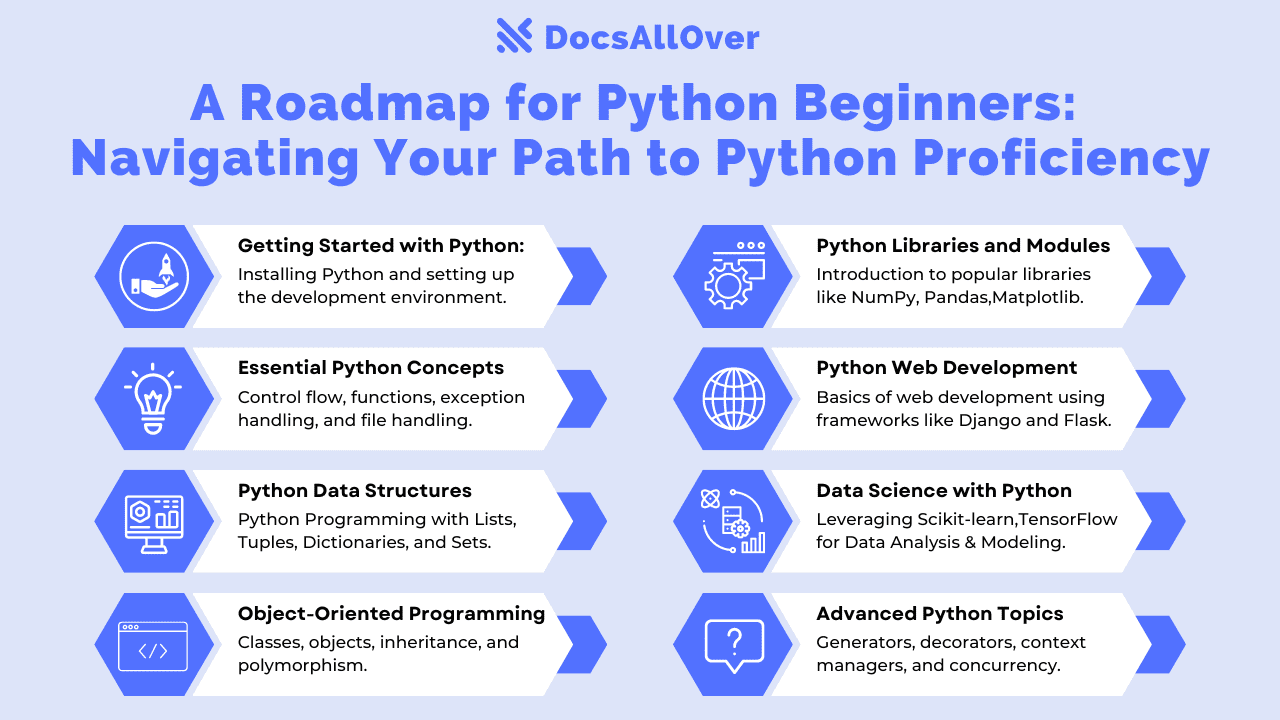Python's Built-in Functions: Explore the Power and Versatility of the Library

What are built-in functions in Python?
- Built-in functions are functions that are readily available within the Python interpreter without the need for importing any external modules.
- They are part of Python's core functionality and provide essential operations for various tasks.
- These functions are pre-defined and always accessible, making Python a powerful and convenient language.
- They cover a wide range of tasks, from basic data manipulation to more complex operations.
Importance and advantages of using built-in functions:
- Efficiency: Built-in functions are often implemented in C, making them highly optimized for performance.
- Readability: Using built-in functions can make code more concise and easier to understand.
- Convenience: They eliminate the need to write custom functions for common tasks.
- Portability: Built-in functions are available in all standard Python installations, ensuring code portability.
- Reduced development time: They allow developers to focus on higher-level logic rather than reinventing the wheel.
- Reduced bugs: Because the built in functions are well tested, they reduce the amount of errors in code.
Overview of the Python standard library:
- The Python standard library is a collection of modules that provides a vast array of functionality beyond the built-in functions.
- It includes modules for various tasks, such as file I/O, networking, data compression, and more.
- The standard library allows developers to perform complex operations without relying on external libraries.
- While this blog post focuses on built-in functions, it's important to recognize that the standard library complements them.
- The standard library is part of every standard python distribution.
Core Built-in Functions for Data Manipulation
len(): Determining the length of sequences.
- This function returns the number of items in a sequence (string, list, tuple, etc.).
- It's incredibly useful for finding the size of a collection or the number of characters in a string.
type(): Checking the data type of objects.
- This function returns the type of an object.
- It's helpful for debugging and ensuring that you're working with the expected data types.
range(): Generating sequences of numbers.
- This function creates a sequence of numbers, often used in loops.
- It can take one, two, or three arguments:
range(stop),range(start, stop),range(start, stop, step).
list(), tuple(), set(), dict(): Converting between data structures.
- These functions convert objects to lists, tuples, sets, or dictionaries, respectively.
- They are useful for transforming data between different collection types.
sorted(): Sorting sequences.
- This function returns a new sorted list from the items in any iterable.
- It can sort in ascending or descending order.
reversed(): Reversing sequences.
This function returns a reversed iterator. To obtain a list, tuple, or other sequence, the result of reversed must be cast to the desired type.
Example:
Numerical and Mathematical Built-in Functions
abs(): Absolute value.
- This function returns the absolute value of a number.
- It removes the negative sign if the number is negative.
sum(): Summing elements in a sequence.
- This function returns the sum of all elements in an iterable (list, tuple, etc.).
- It can also take an optional
startargument to add to the sum.
min() and max(): Finding minimum and maximum values.
min()returns the smallest element in an iterable or the smallest of two or more arguments.max()returns the largest element in an iterable or the largest of two or more arguments.
round(): Rounding numbers.
- This function rounds a number to a specified number of decimal places.
- If the second argument (number of decimal places) is omitted, it rounds to the nearest integer.
pow(): Exponentiation.
- This function returns the result of raising a number to a power.
- It can also take a third argument for modulo operation (e.g.,
pow(x, y, z)returns(x ** y) % z).
Example:
String and Text Processing Built-in Functions
str(): Converting objects to strings.
The str() function is used to obtain a string representation of an object. This is useful for displaying information or combining different data types into a single string.
print(): Outputting text to the console.
The print() function displays output to the standard output stream (usually the console). It can take multiple arguments, which are separated by a space by default.
input(): Getting user input.
The input() function prompts the user for input from the console. It takes an optional prompt string as an argument and returns the user's input as a string.
format(): String formatting.
The format() function provides a versatile way to create formatted strings. It can be used with positional and keyword arguments, and allows for various formatting specifications.
enumerate(): Iterating with indices.
The enumerate() function adds a counter to an iterable and returns an enumerate object. This object yields pairs of (index, element) during iteration, making it easy to access both the index and the value of each item.
Example:
Iteration and Functional Programming Built-in Functions
map(): Applying a function to each item in an iterable.
- The
map()function applies a given function to each item in an iterable (like a list or tuple) and returns an iterator that yields the results. - It's a concise way to perform the same operation on multiple items.
filter(): Filtering elements based on a condition.
- The
filter()function constructs an iterator from elements of an iterable for which a function returns true. - It's used to select elements that meet a specific criteria.
zip(): Combining multiple iterables.
- The
zip()function returns an iterator of tuples, where the i-th tuple contains the i-th element from each of the input iterables. - It stops when the shortest input iterable is exhausted.
all() and any(): Checking conditions on iterables.
all(iterable): ReturnsTrueif all elements of the iterable are true (or if the iterable is empty).any(iterable): ReturnsTrueif at least one element of the iterable is true. ReturnsFalseif the iterable is empty.
Example:
Input/Output and File Handling Built-in Functions
open(): Opening files for reading or writing.
- The
open()function is fundamental for working with files in Python. It provides a way to connect your program to a file on your system, allowing you to read data from it or write data to it. - It takes the file path as the primary argument and a mode argument (e.g., 'r' for reading, 'w' for writing, 'a' for appending, 'b' for binary mode, 't' for text mode - which is the default).
- It returns a file object (also often called a file handle), which you can then use to perform operations on the file.
- It's crucial to close the file object after you're done with it to release system resources. The
withstatement is the recommended way to handle files as it automatically takes care of closing the file, even if errors occur.
print() and input(): Basic I/O interactions.
- While primarily covered in the "String and Text Processing" section,
print()andinput()are also fundamental built-in functions for basic Input/Output (I/O) interactions with the user via the console. print(): As discussed earlier,print()sends output (text, variables, etc.) to the standard output stream (usually the console). This is a way for your program to communicate information to the user or log events.input(): Also discussed previously,input()reads a line of text entered by the user from the standard input stream (usually the keyboard). This allows your program to receive information or commands from the user.
Example:
These two sets of functions, open() for file I/O and print()/input() for basic console I/O, form the foundation for how Python programs interact with the outside world to read data and provide results.
Advanced and Less Common Built-in Functions
eval(): Evaluating expressions.
The eval() function evaluates a string containing a Python expression. It can be a powerful tool but should be used with extreme caution, especially with untrusted input, as it can execute arbitrary code.
exec(): Executing Python code.
The exec() function executes dynamically generated Python code, which can be a statement or a sequence of statements. Similar to eval(), it should be used cautiously due to potential security risks with untrusted input.
callable(): Checking if an object is callable.
The callable() function returns True if the object passed as an argument appears to be callable (e.g., a function, method, class, or an object of a class with a __call__ method), and False otherwise.
isinstance() and issubclass(): Type checking.
isinstance(object, classinfo): ReturnsTrueif the object is an instance of theclassinfoargument (or of a subclass thereof), andFalseotherwise.classinfocan also be a tuple of type objects.issubclass(class, classinfo): ReturnsTrueif class is a subclass (direct, indirect) ofclassinfo, andFalseotherwise.classinfocan also be a tuple of class objects.
globals() and locals(): Accessing global and local variables.
globals(): Returns a dictionary representing the current global symbol table. This dictionary always contains all of the names currently defined in the global scope.locals(): Returns a dictionary representing the current local symbol table. Whenlocals()is called in a function block, it returns a dictionary containing all of the names currently bound in that function’s local scope. Whenlocals()is called outside a function block, it returns the same dictionary as is returned byglobals().
Example:
Best Practices and Tips
Choosing the right built-in function for the task:
- Python's extensive set of built-in functions often provides the most efficient and readable way to perform common operations. Before writing custom code, consider if a built-in function can achieve the desired result.
- Read the documentation: Familiarize yourself with the Python documentation for built-in functions to understand their purpose, parameters, and return values.
- Be specific: Choose the function that most directly addresses the task. For example, use
sum()to add numbers in a list instead of writing a manual loop. - Consider readability: Built-in functions are generally well-understood by Python developers, making your code more readable and maintainable.
Combining built-in functions for complex operations:
- Python's built-in functions can be effectively combined to perform more intricate data manipulations and logic in a concise manner.
- Chaining: The output of one built-in function can often be directly used as the input for another. For example,
len(list(reversed(my_string))). - Nested calls: You can nest built-in function calls to achieve complex transformations in a single line.
- Functional programming style: Functions like
map(),filter(), andreduce()(from thefunctoolsmodule) are designed for combining operations on iterables.
Understanding performance implications:
- Built-in functions are generally implemented in optimized C code, making them very efficient. Using them often leads to better performance than equivalent Python loops or custom functions.
- Avoid unnecessary conversions: Be mindful of converting data structures unnecessarily, as this can introduce overhead. For example, if you only need to iterate over a reversed sequence once, using
reversed()directly in a loop is more efficient than converting it to alistfirst. - Lazy evaluation: Functions like
map(),filter(), andreversed()return iterators, which produce items on demand. This can save memory and processing time, especially with large datasets. - Profiling: If performance is critical, use Python profiling tools (like
cProfileortimeit) to identify bottlenecks and ensure that your use of built-in functions is contributing to efficiency.
Avoiding common pitfalls:
- Mutable defaults: Be cautious when using mutable default arguments in custom functions, as this can lead to unexpected behavior. This is not directly related to built-in functions but is a general Python pitfall to be aware of.
eval()andexec()security risks: As mentioned earlier, avoid usingeval()andexec()with untrusted input, as they can pose significant security vulnerabilities by allowing arbitrary code execution.- Understanding return types: Be sure to understand the return type of each built-in function you use. For example,
sorted()returns a new list, whilereversed()returns an iterator. You might need to explicitly convert iterators to other sequence types if you need to access elements multiple times or by index. - Shadowing built-in names: Avoid using the names of built-in functions as variable names (e.g.,
list = [1, 2, 3]). This will shadow the built-in function, making it inaccessible within that scope and potentially leading to confusing errors. - Incorrect arguments: Pay close attention to the number and types of arguments expected by each built-in function. Passing incorrect arguments will result in
TypeError. - Side effects: Be aware if a built-in function modifies its input in place (though many data manipulation built-ins return new objects rather than modifying the original). For example,
list.sort()sorts a list in place and returnsNone, whilesorted()returns a new sorted list.










